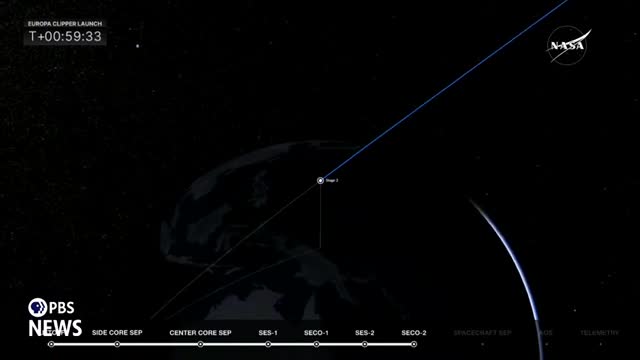NASA's Europa Clipper successfully embarks on groundbreaking mission
This article was created by AI summarizing key points discussed. AI makes mistakes, so for full details and context, please refer to the video of the full meeting. Please report any errors so we can fix them. Report an error »

NASA's Europa Clipper Mission Successfully Launched, Begins Journey to Jupiter's Icy Moon
NASA's Europa Clipper spacecraft has successfully separated from the Falcon Heavy rocket, marking a significant milestone in its long-awaited mission to explore Jupiter's moon, Europa. The launch, which took place earlier today, was celebrated by the team at the Jet Propulsion Laboratory (JPL) and the Applied Physics Laboratory (APL), who have dedicated years to the project.
Flight analysis division chief Mike Carney received special recognition during the meeting for his 25 years of work on the Europa mission, highlighting the dedication of the team involved. The spacecraft is now on its trajectory towards Europa, utilizing gravity assists to navigate through the high radiation environment of the Van Allen radiation belts.
As the mission progresses, the team monitored solar proton flux to ensure safe deployment conditions. The spacecraft's successful separation was confirmed just over an hour after launch, with telemetry data indicating a solid connection with ground control. The team is now focused on receiving further data from the spacecraft as it embarks on its journey to study the icy moon, which is believed to harbor conditions suitable for life.
The Europa Clipper mission aims to gather critical information about Europa's ice-covered surface and subsurface ocean, potentially unlocking secrets about the moon's habitability. The successful launch and deployment of the spacecraft represent a significant step forward in NASA's exploration of the outer solar system.
NASA's Europa Clipper spacecraft has successfully separated from the Falcon Heavy rocket, marking a significant milestone in its long-awaited mission to explore Jupiter's moon, Europa. The launch, which took place earlier today, was celebrated by the team at the Jet Propulsion Laboratory (JPL) and the Applied Physics Laboratory (APL), who have dedicated years to the project.
Flight analysis division chief Mike Carney received special recognition during the meeting for his 25 years of work on the Europa mission, highlighting the dedication of the team involved. The spacecraft is now on its trajectory towards Europa, utilizing gravity assists to navigate through the high radiation environment of the Van Allen radiation belts.
As the mission progresses, the team monitored solar proton flux to ensure safe deployment conditions. The spacecraft's successful separation was confirmed just over an hour after launch, with telemetry data indicating a solid connection with ground control. The team is now focused on receiving further data from the spacecraft as it embarks on its journey to study the icy moon, which is believed to harbor conditions suitable for life.
The Europa Clipper mission aims to gather critical information about Europa's ice-covered surface and subsurface ocean, potentially unlocking secrets about the moon's habitability. The successful launch and deployment of the spacecraft represent a significant step forward in NASA's exploration of the outer solar system.
View full meeting
This article is based on a recent meeting—watch the full video and explore the complete transcript for deeper insights into the discussion.
View full meeting